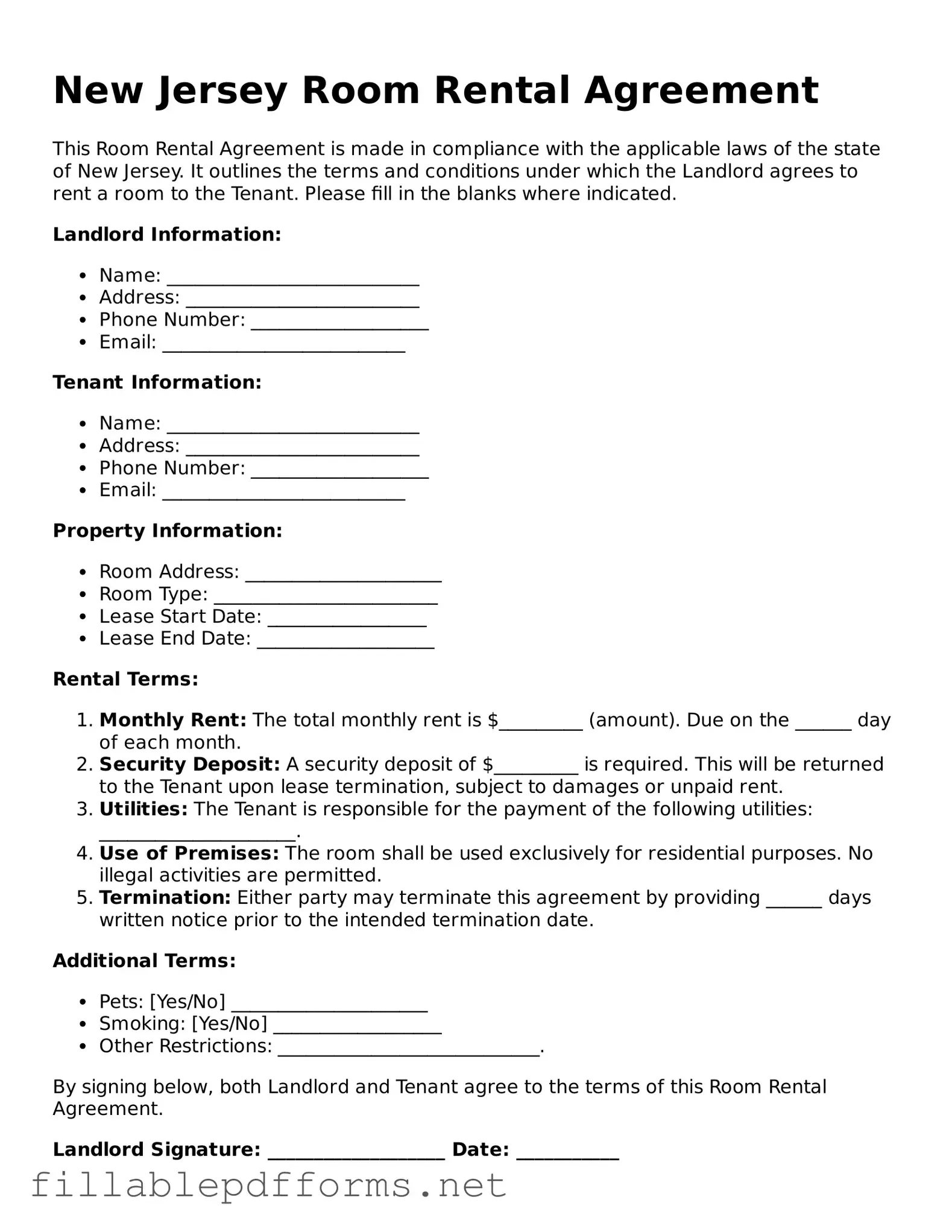In New Jersey, the Room Rental Agreement form serves as a crucial tool for both landlords and tenants, outlining the terms and conditions of renting a room within a property. This document typically includes essential details such as the names of the parties involved, the rental property's address, and the duration of the rental period. Additionally, it specifies the monthly rent amount, security deposit requirements, and payment methods, ensuring that both parties have a clear understanding of their financial obligations. The agreement also covers rules regarding utilities, maintenance responsibilities, and any restrictions on the use of common areas, which helps to prevent misunderstandings down the line. By establishing these guidelines, the Room Rental Agreement fosters a sense of security and accountability for everyone involved, promoting a positive living arrangement. Understanding this form is vital for anyone considering a room rental in New Jersey, as it lays the groundwork for a successful landlord-tenant relationship.
